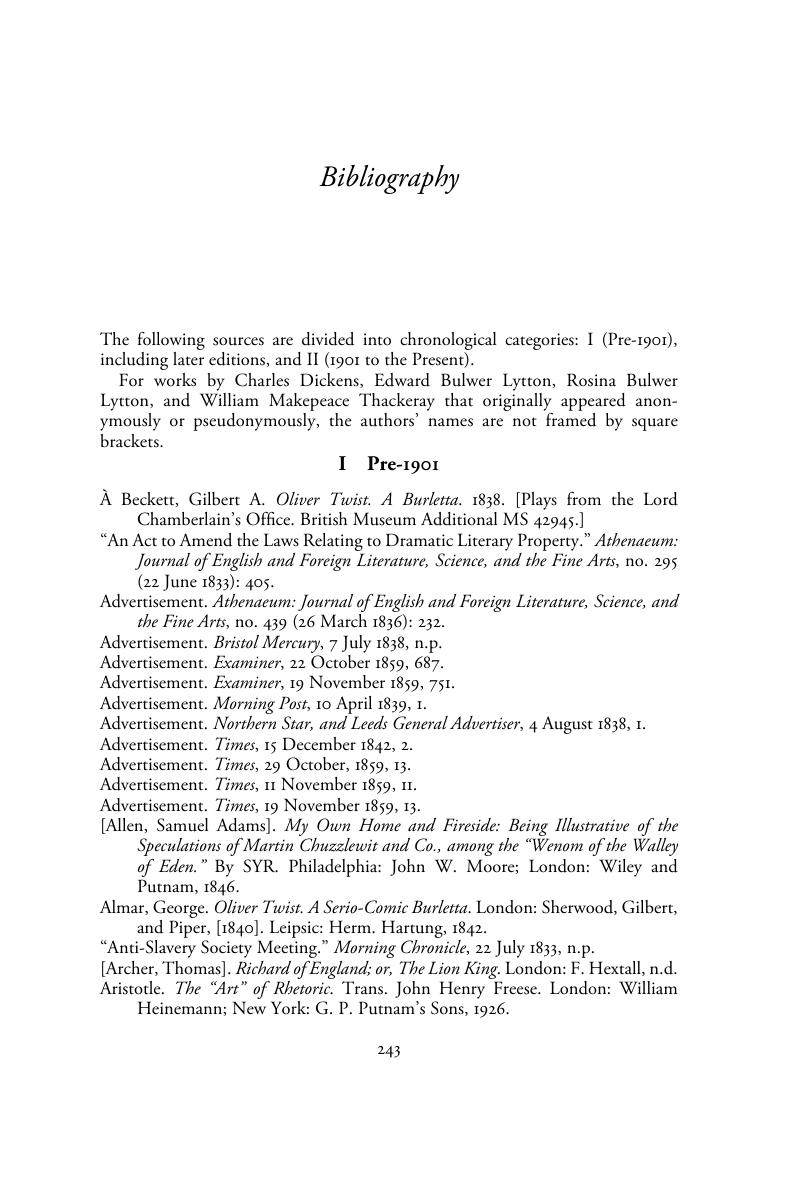Book contents
- Plagiarizing the Victorian Novel
- Cambridge Studies in Nineteenth-Century Literature and Culture
- Plagiarizing the Victorian Novel
- Copyright page
- Contents
- Illustrations
- Acknowledgments
- Prologue
- Chapter One The Pickwick Phenomenon
- Chapter Two Charles Dickens and the Pseudo-Dickens Industry
- Chapter Three Parody; or, The Art of Writing Edward Bulwer Lytton
- Chapter Four Thackeray versus Bulwer versus Bulwer: Parody and Appropriation
- Chapter Five Being George Eliot: Imitation, Imposture, and Identity
- Postscript, Posthumous Papers, Aftertexts
- Notes
- Bibliography
- Index
- Cambridge Studies in Nineteenth-Century Literature and Culture
- References
Bibliography
Published online by Cambridge University Press: 07 August 2019
- Plagiarizing the Victorian Novel
- Cambridge Studies in Nineteenth-Century Literature and Culture
- Plagiarizing the Victorian Novel
- Copyright page
- Contents
- Illustrations
- Acknowledgments
- Prologue
- Chapter One The Pickwick Phenomenon
- Chapter Two Charles Dickens and the Pseudo-Dickens Industry
- Chapter Three Parody; or, The Art of Writing Edward Bulwer Lytton
- Chapter Four Thackeray versus Bulwer versus Bulwer: Parody and Appropriation
- Chapter Five Being George Eliot: Imitation, Imposture, and Identity
- Postscript, Posthumous Papers, Aftertexts
- Notes
- Bibliography
- Index
- Cambridge Studies in Nineteenth-Century Literature and Culture
- References
Summary

- Type
- Chapter
- Information
- Plagiarizing the Victorian NovelImitation, Parody, Aftertext, pp. 243 - 274Publisher: Cambridge University PressPrint publication year: 2019



